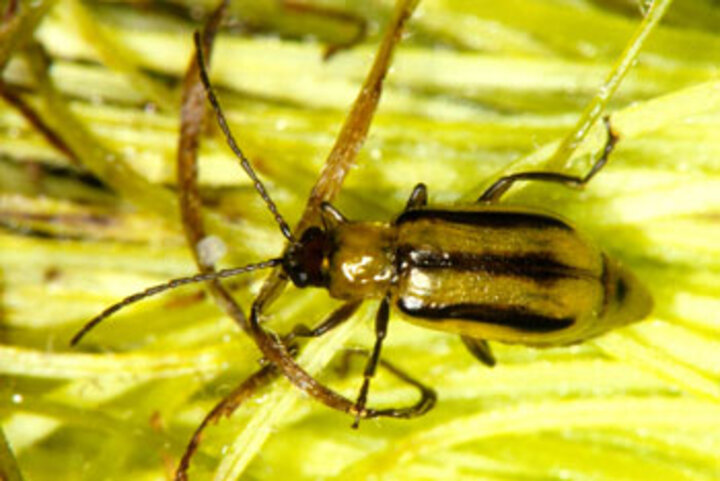- UNL and KSU research (Periera et al. 2015) shows that adult corn rootworms have reduced susceptibility to bifenthrin insecticide in southwest Kansas and southwest Nebraska; areas where continuous corn is common and this active ingredient is frequently used at planting time (Capture LFR, others) or as a foliar insecticide (Brigade, others).
- Four types of Bt proteins target corn rootworms: Cry3Bb1, mCry3A, eCry3.1Ab, and Cry34/35Ab1. In multiple counties across Nebraska, greater than expected injury has been observed or resistance confirmed when single trait Cry3Bb1 or mCry3A hybrids have been planted for more than three consecutive years.
- Cross-resistance between the Cry3Bb1, mCry3A, and eCry3.1Ab proteins exists. For this reason, in areas with a history of greater than expected damage to hybrids with Cry3Bb1 traits, such as YieldGard Rootworm or VT Triple Pro, we do not recommend hybrids in continuous corn that express only mCry3A or mCry3A/eCry3.1Ab proteins, without additional control practices.
- The Cry34/35Ab1 protein, expressed either singly or in a pyramid (such as Herculex RW or SmartStax, respectively) is still performing well in most Nebraska locations.
Resources for Additional Information
- Insecticide Mode Of Action Classification For Nebraska Field Crops (NebGuide G2066)
- Insecticide Resistance Action Committee (IRAC)
- Handy Bt Trait Table
- Pereira AE, Wang H, Zukoff SN, Meinke LJ, French BW, Siegfried BD (2015) Evidence of Field- Evolved Resistance to Bifenthrin in Western Corn Rootworm (Diabrotica virgifera virgifera LeConte) Populations in Western Nebraska and Kansas. PLoS ONE10(11): e0142299. doi:10.1371/journal. pone.0142299
Summary
The use of diverse management tactics on a farm is the best strategy to manage rootworms. Periodic crop rotation out of corn can greatly reduce rootworm populations. Avoid repeated use of the same insecticide products and Bt corn proteins to avoid development of resistance, and maintain efficacy of these important management tools.


